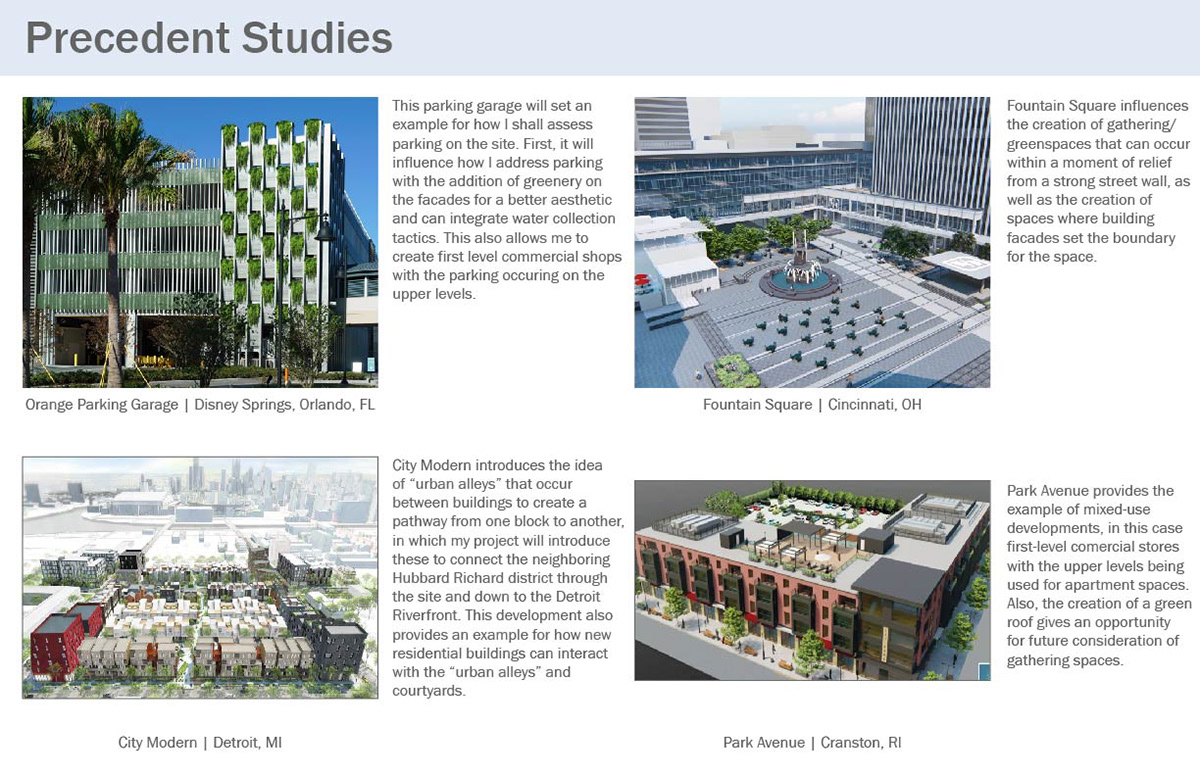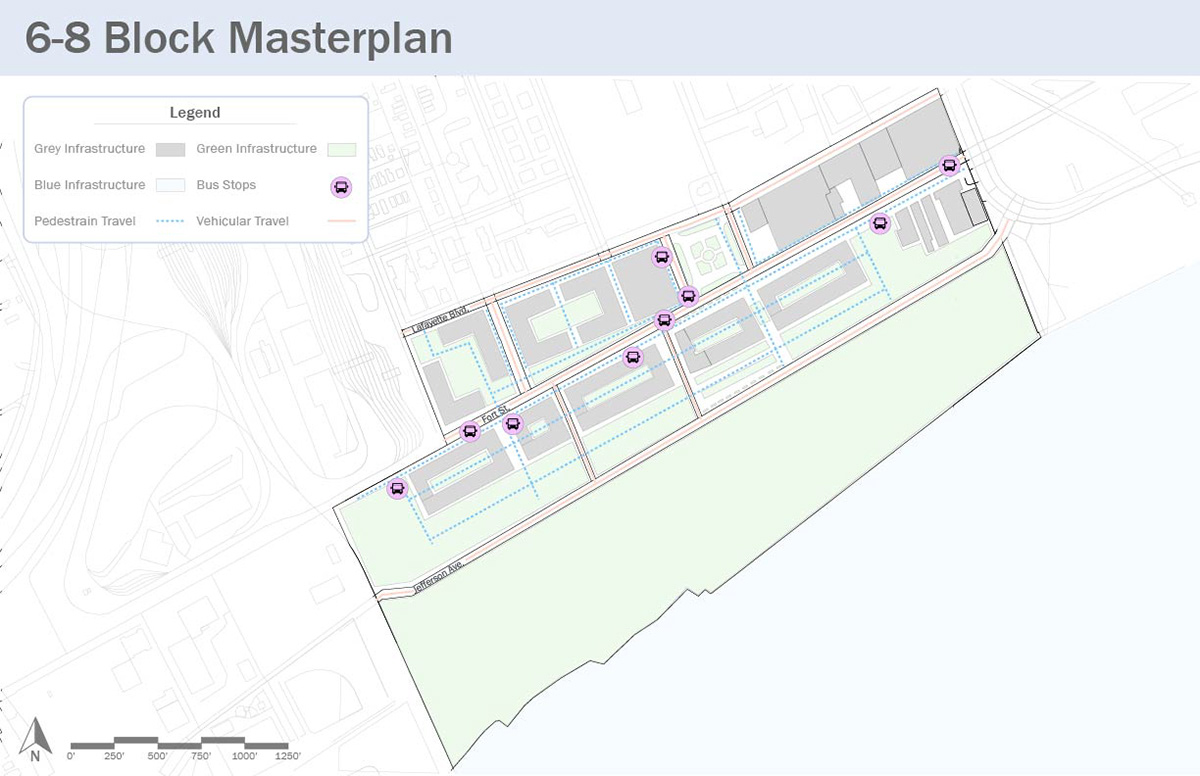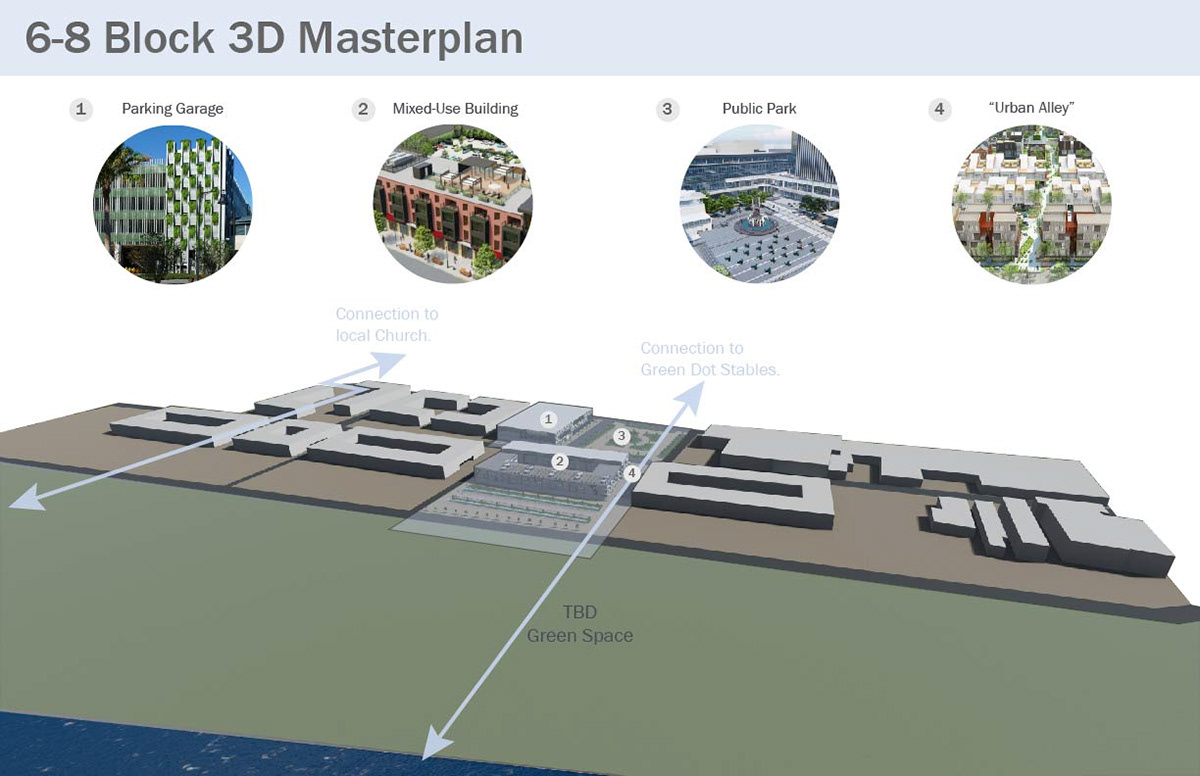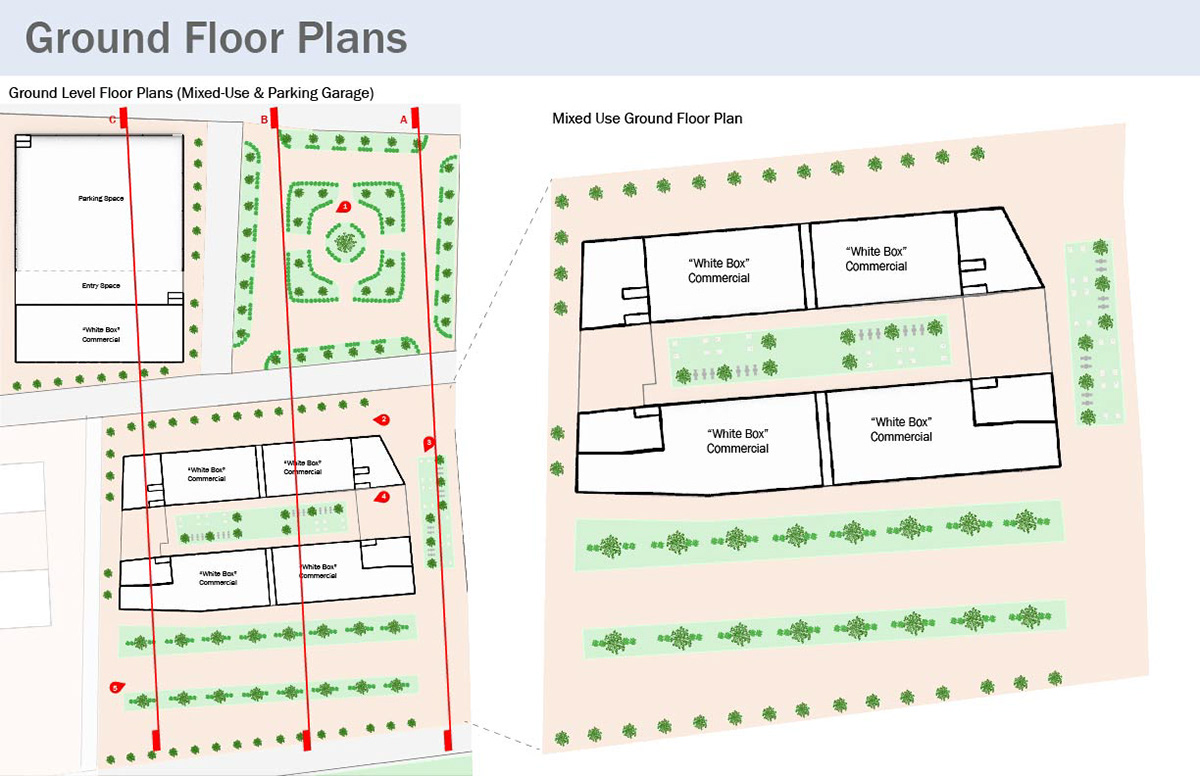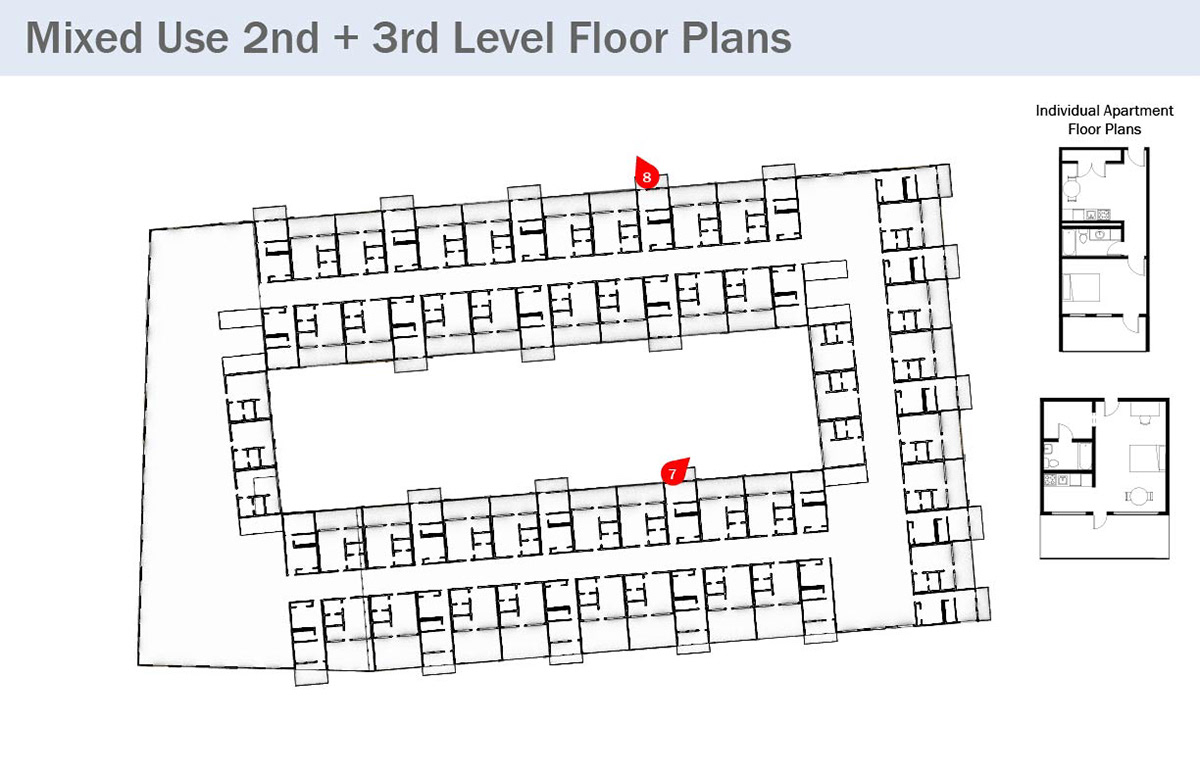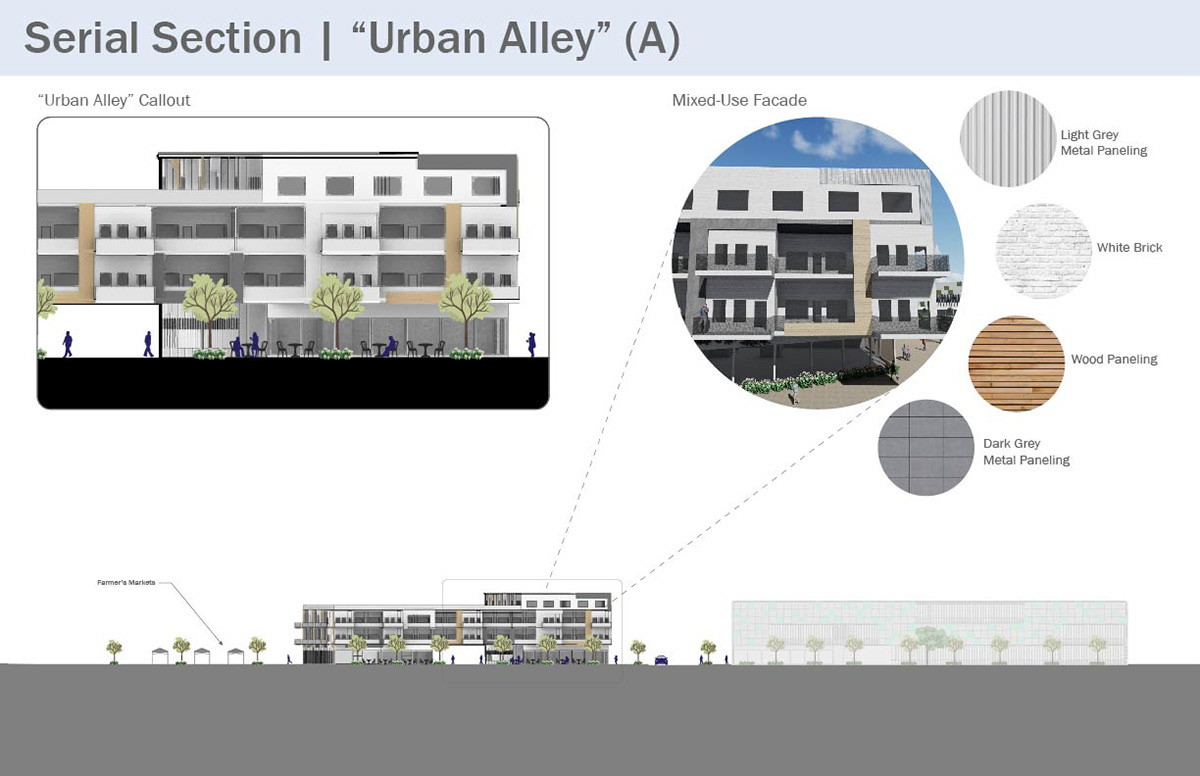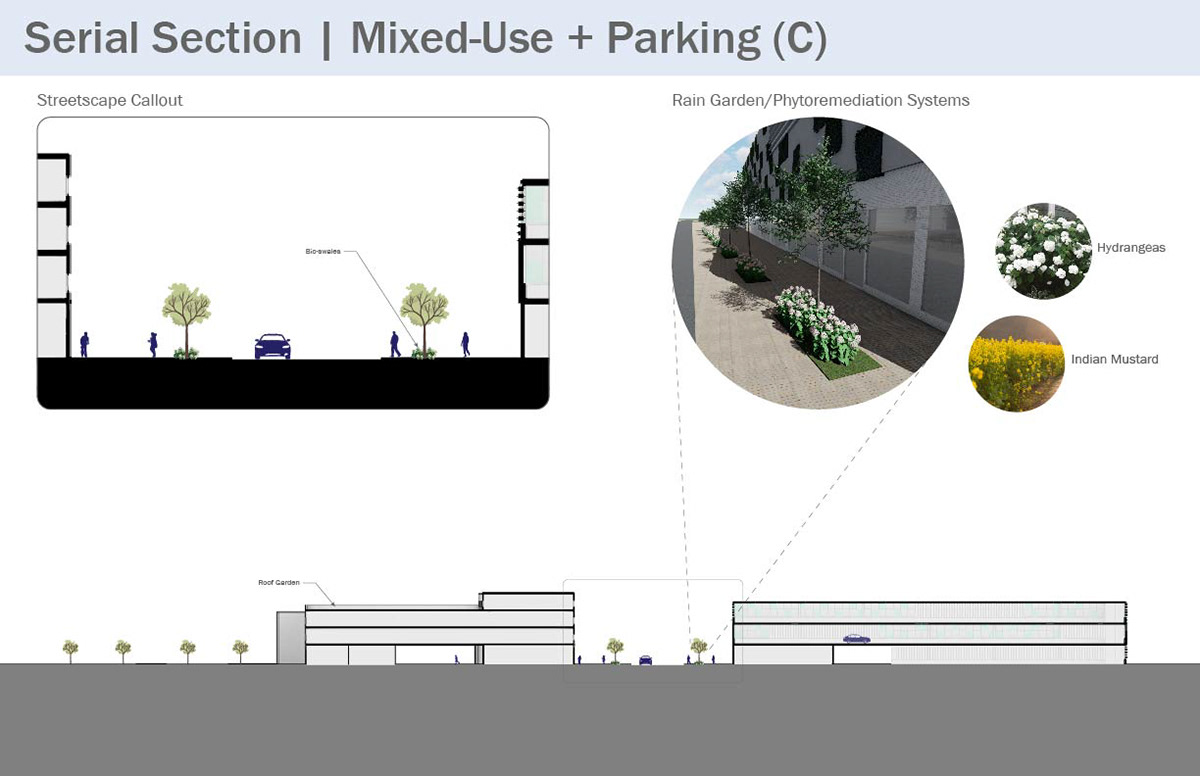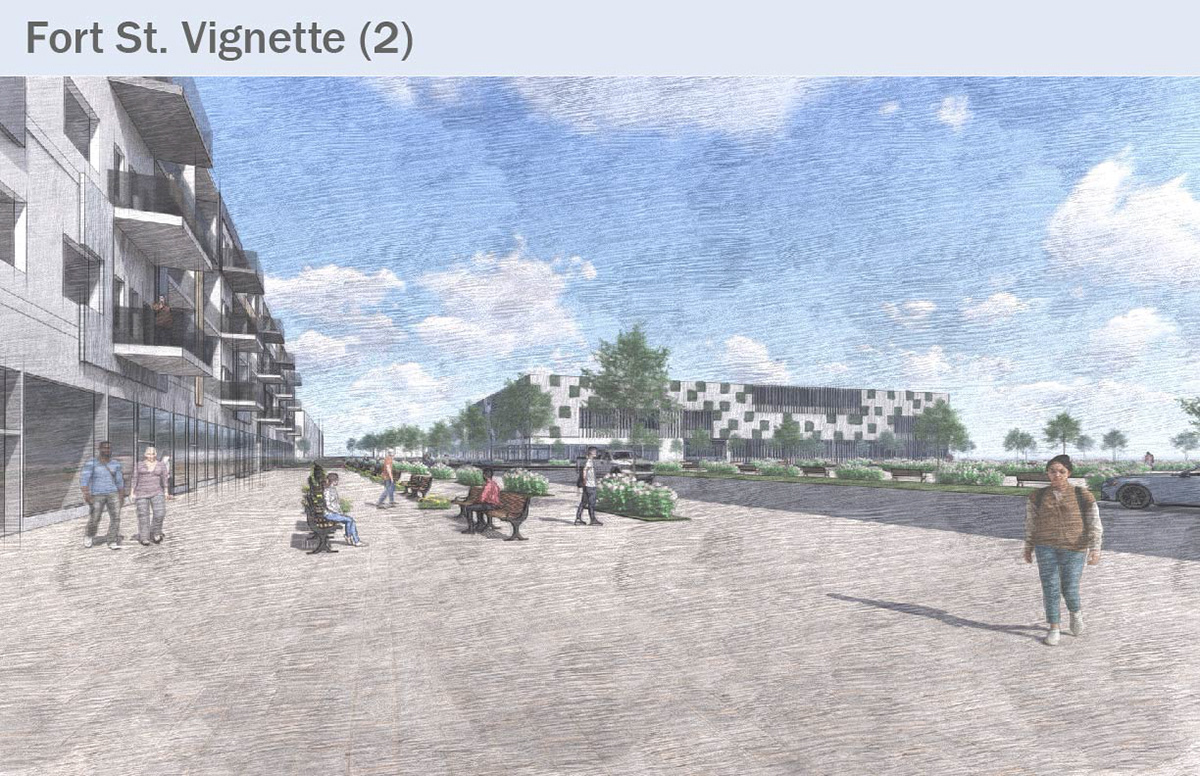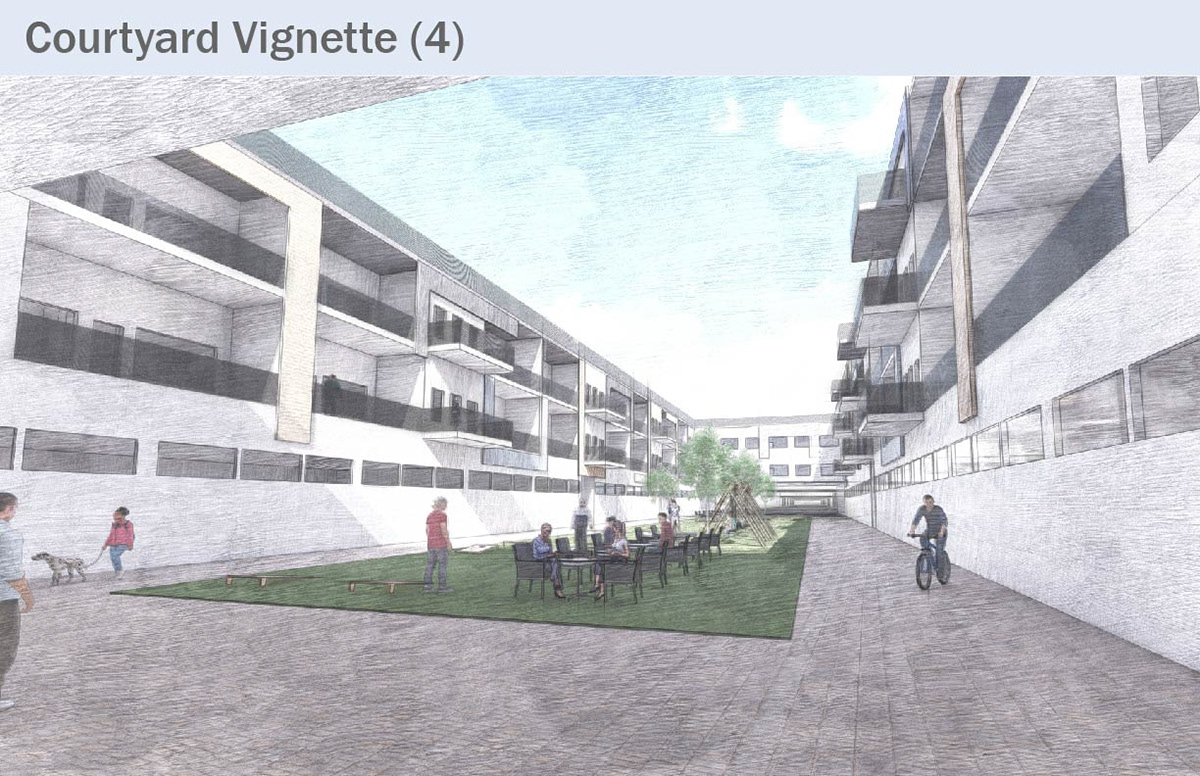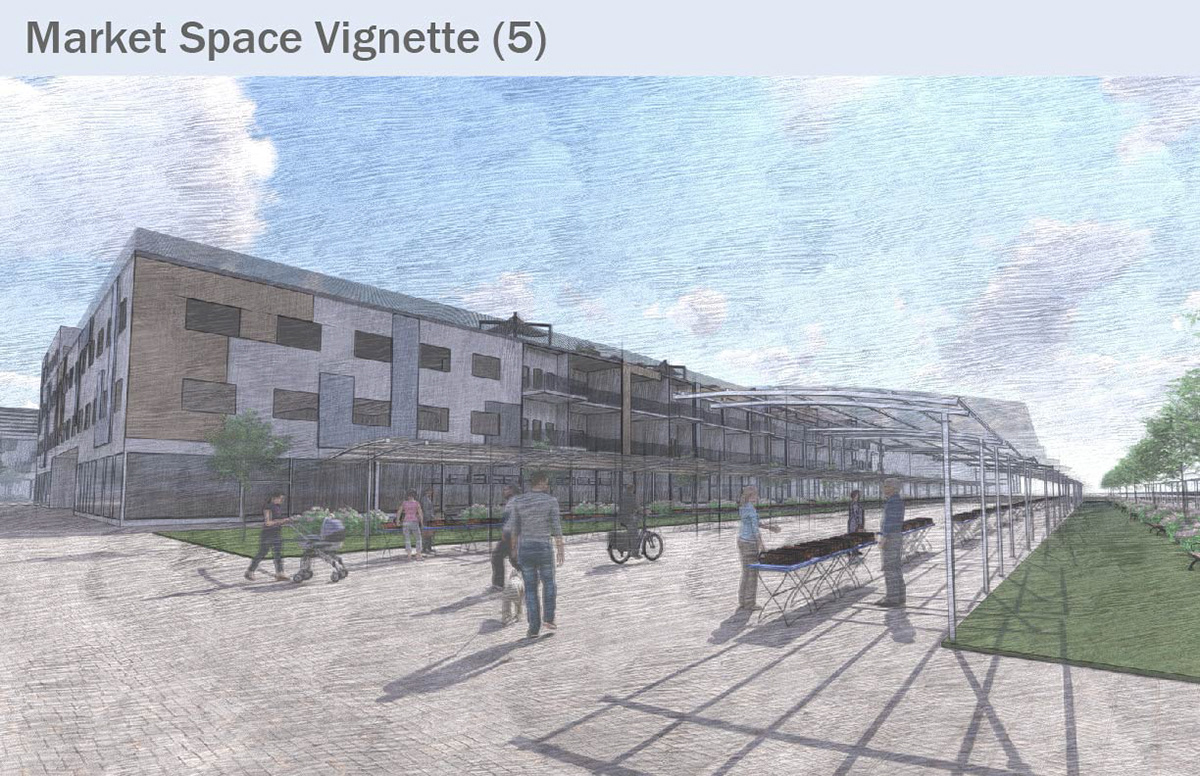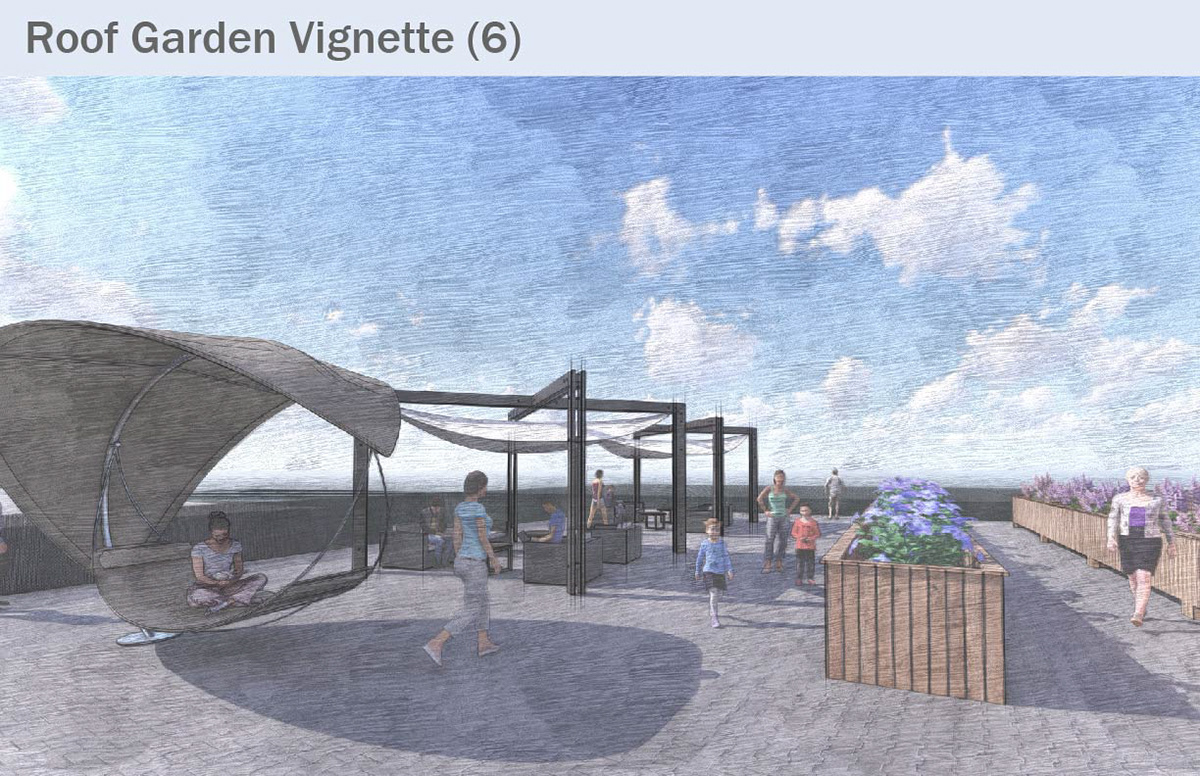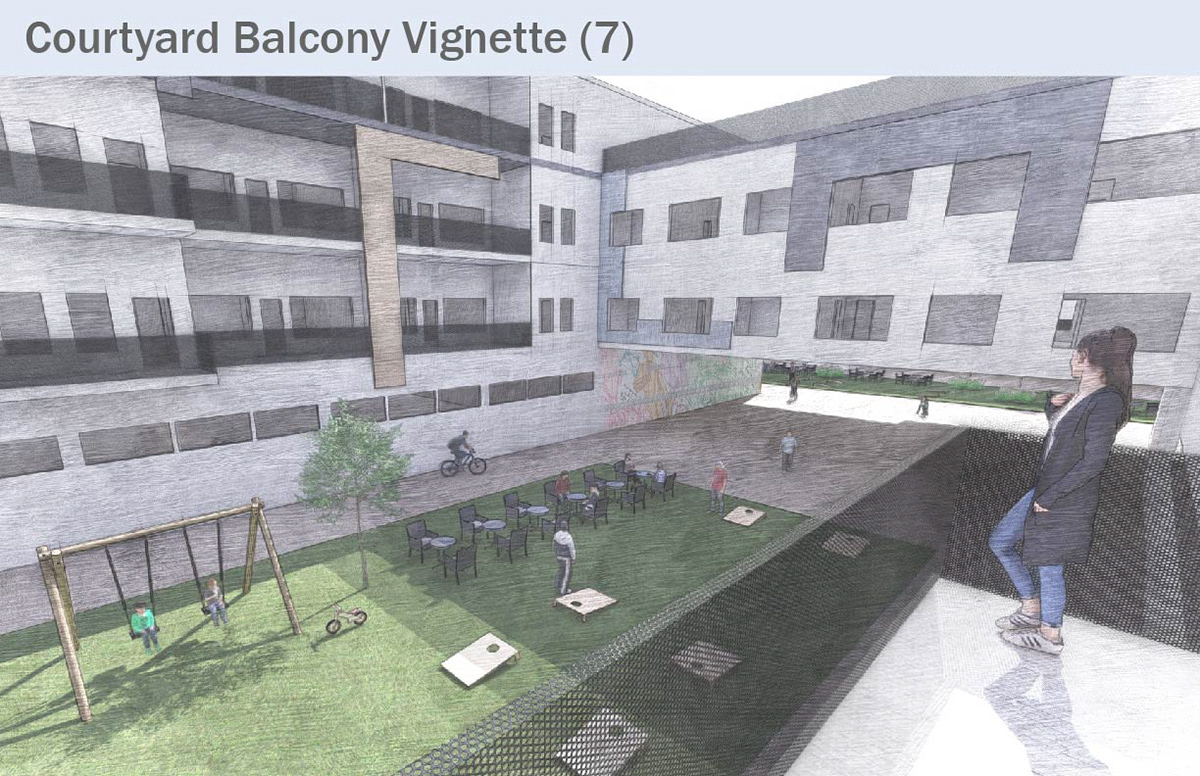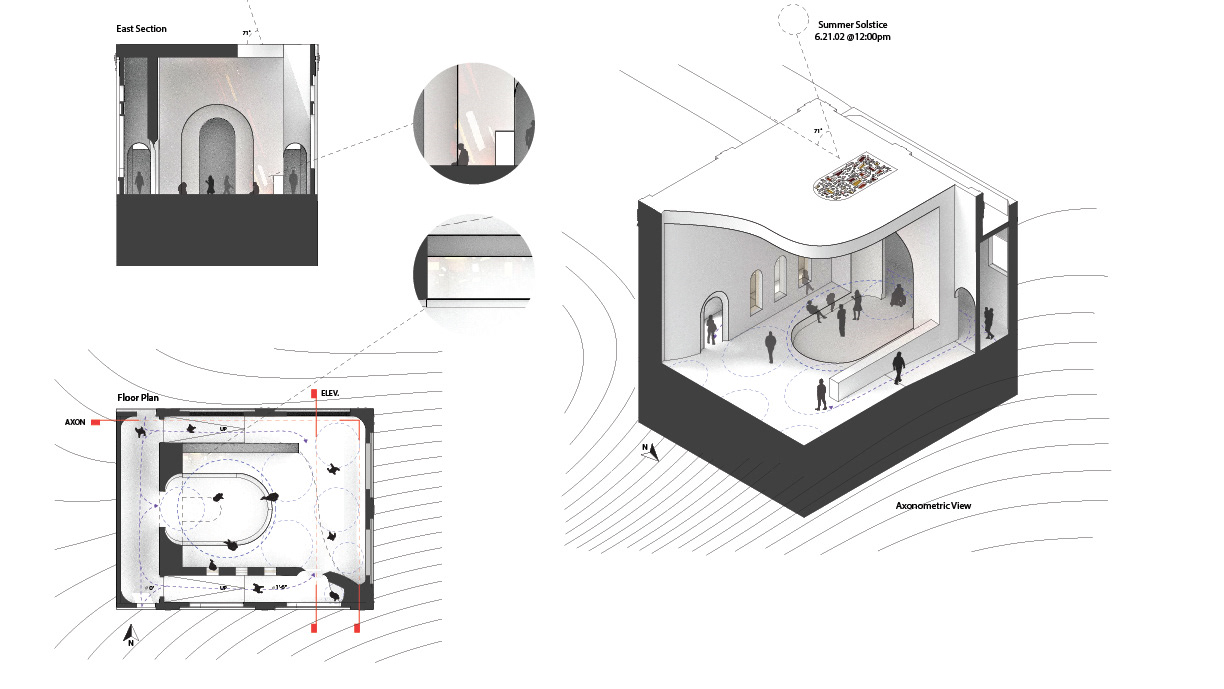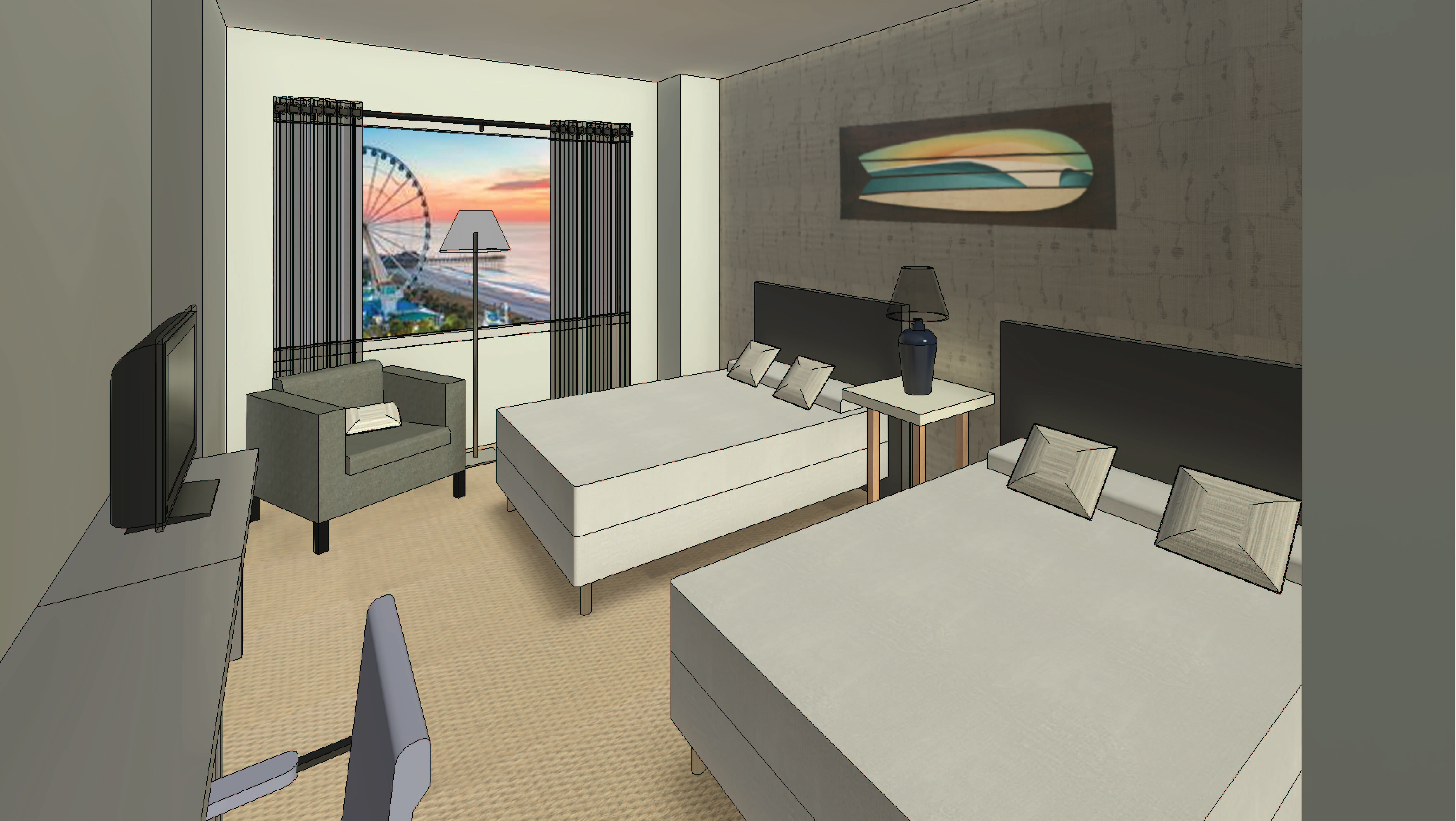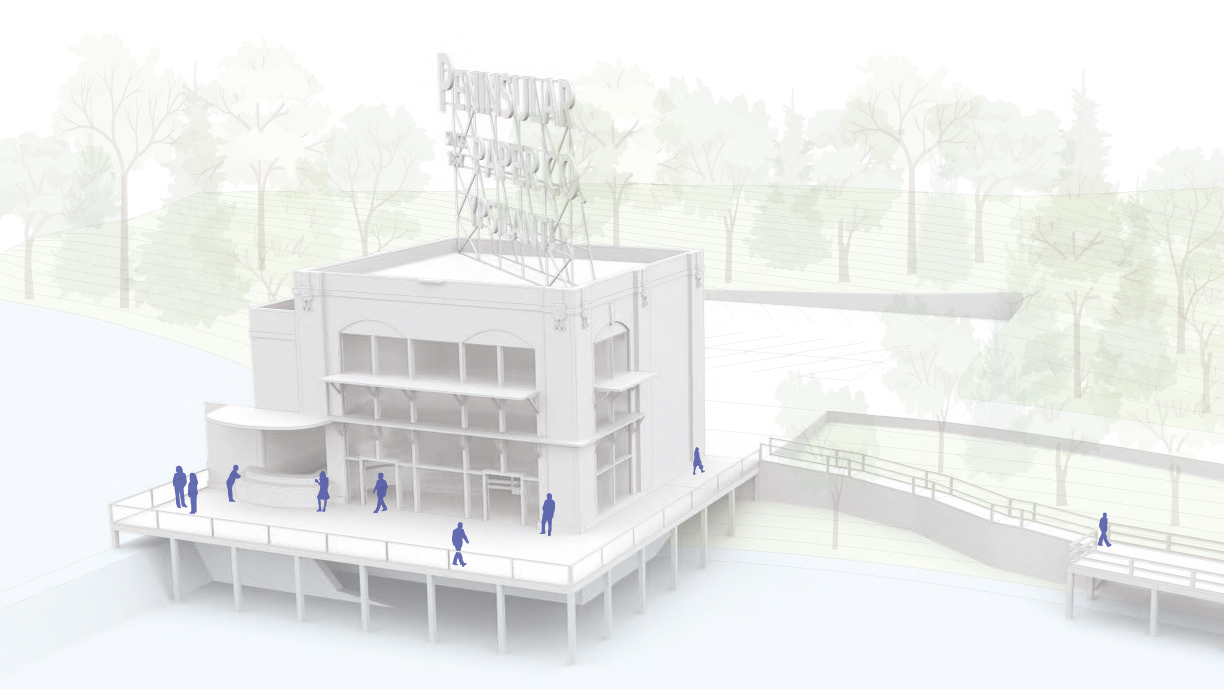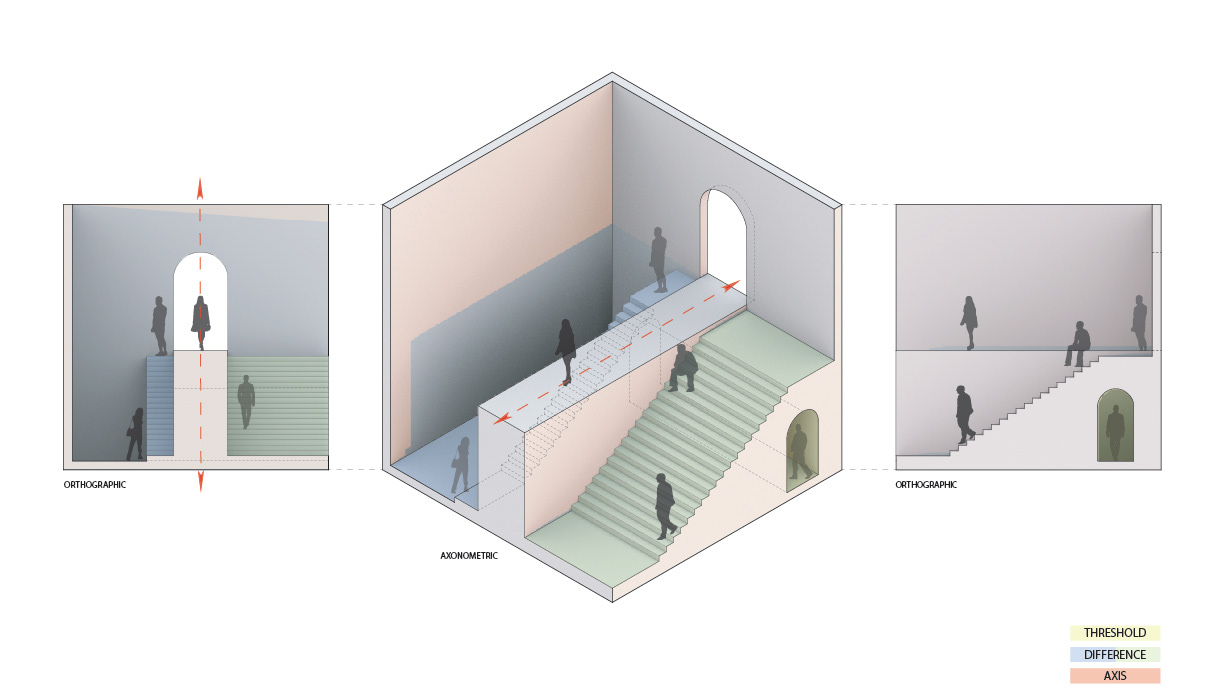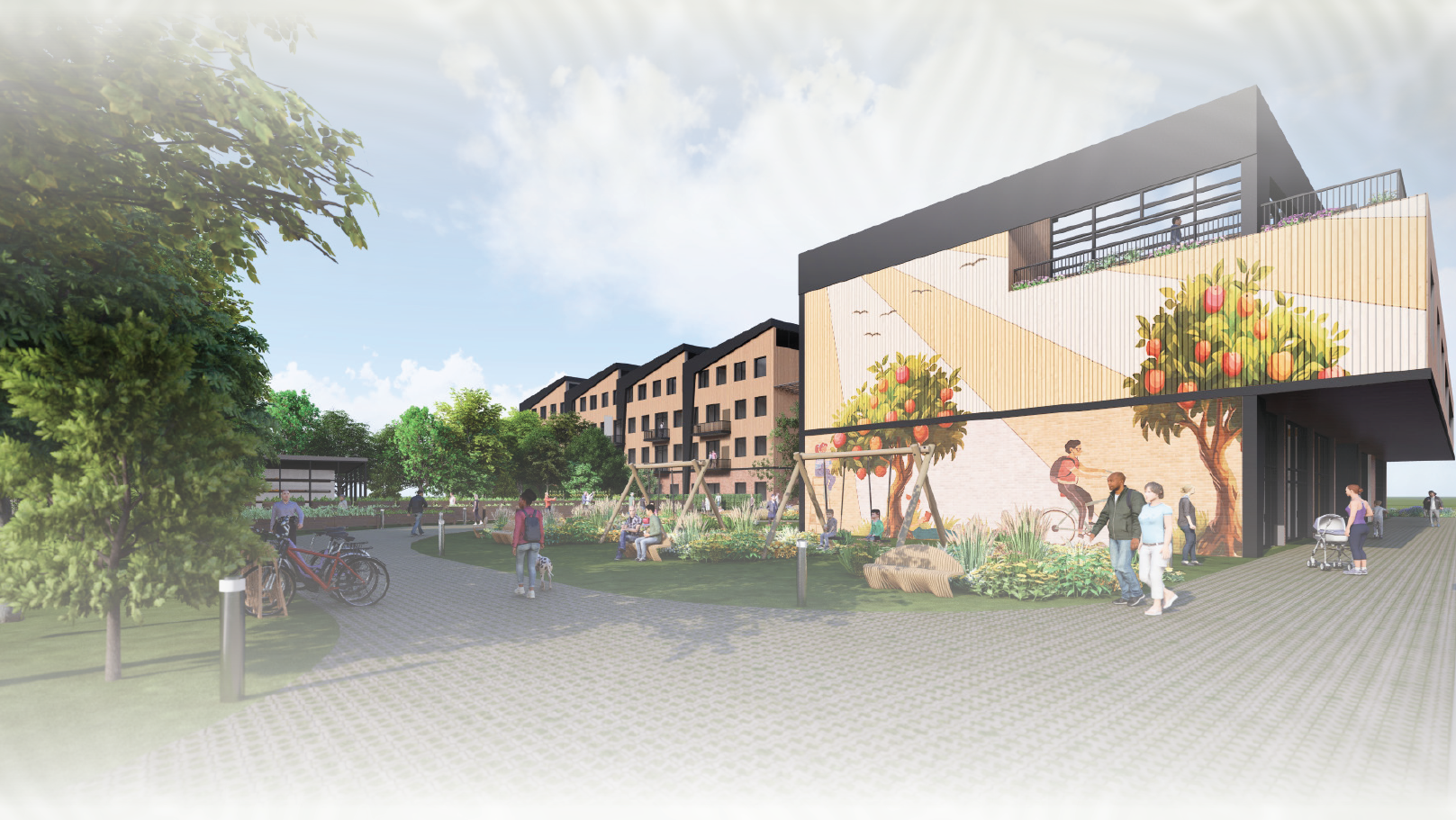The current state of the study zone consists of a large, roughly 6-block, brownfield and a large amount of vacant buildings and lots throughout the zone. These unused and inaccessible spaces in the zone provide the opportunity to redevelop and reuse the spaces in future work and development. The brownfields provide the ability to create a large, unique public green space that can connect itself to adjacent parks, the Riverside Exte sion Park and the Ralph C. Wilson Centennial Park, to create a strong riverside greenspace and landing point for the Detroit Riverwalk. The neighboring Hubbard-Richard district provides more connection opportunities, as developed “urban alleys” and pathways travel from the district all the way down to the Detroit River. Water and contamination management like rain gardens, bio-swales, and phytoremediation plants allow for the management of increased precipitation and the removal of contaminants within the brownfields. These new developments have allowed for the creation of unique gathering spaces for a new public experience. My priority for this project is to reclaim and revitalize poor site conditions, like brownfields and vacant buildings, to connect public spaces and create a new public, pedestrian-oriented experience.
